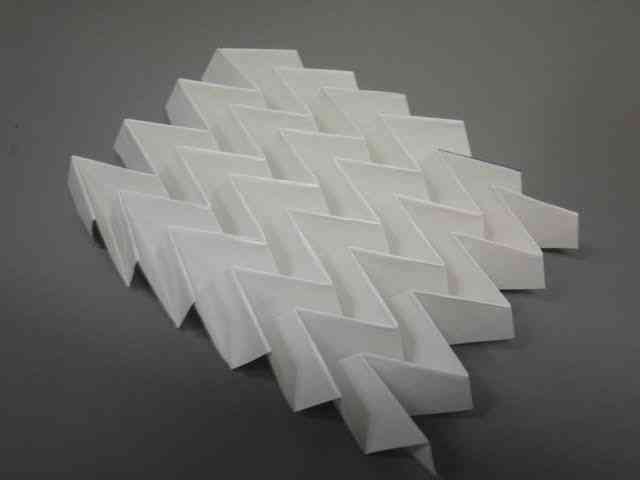Origami is the art of paper folding. It was invented by the Japanese thousands of years ago. Paper was a luxury item in ancient Japanese culture that was used for religious ceremonial purposes.
During the 17th century, paper folding became both a recreational and ceremonial practice in Japanese culture. There are more than 80 different types of origami. Some popular origami types are the Dana fold, Valley fold, etc. One of the hardest kinds of origami is the Miura fold, also known as Miura-ori named after its inventor, a famous Japanese astrophysicist Koryo Miura.

Humans have been practicing Origami for quite some time now. But what’s more surprising is that origami has always been present in front of us in nature.
The framework of a leaf and its folded form during budding is an excellent example of this. Another great example is found in the wings of birds and insects. They all follow the Miura pattern invented by Dr. Miura when unfolding.
The art of origami can also be seen during organ development in the human fetus. In fact, folds are the most energy-efficient and least space requiring way to form viable organs and body parts for organisms. Even the foldings of our DNA follow origami principles. Chromosomes are a supercoiled structure made of DNA that fits efficiently inside a cell nucleus.

The use of origami in our daily life has been extended exponentially once its enormous applications were realized by scientists and engineers. Origami is now widely being used in automobile technologies, robotics, biomedical sciences, architecture, satellite designs, and many other fields of applied sciences. Some great application of this includes airbags we have in our cars, heart stents, self-assembling robots designed by researchers from MIT, retinal implants, etc. The eyeglass telescope is an excellent example of the use of origami in modern technology.
Mirrors can be folded using origami techniques, which can be unfolded when needed to form a large diameter mirror that can be used as a foldable lens. This principle has been applied to make foldable solar panels that can be tucked away when not being used, this saves space. NASA researchers have been deploying origami principles to build a telescope to observe exoplanets from very far away. The project, also known as the “Starshade Project,” comprises large petal-like occulter disc known as starshade to block the excessive light obstructing the view of the subject.
Researchers are also exploring to find new ways to implement the knowledge of origami in the technology of the future.
Sources:
- Origami May Be an Art, but Nature Got There First. Retrieved from https://www.nytimes.com/2005/03/22/science/origami-may-be-an-art-but-nature-got-there-first.html on 24/04/2020
- Wing origami. Retrieved from https://www.nature.com/articles/d41586-018-03775-4 on 24/04/2020
- Complex silica composite nanomaterials templated with DNA origami. Retrieved from https://www.nature.com/articles/s41586-018-0332-7 on 24/04/2020
- Sites of high local frustration in DNA origami. Retrieved from https://www.nature.com/articles/s41467-019-09002-6 on 24/04/2020
- Nanomechanical DNA origami 'single-molecule beacons' directly imaged by atomic force microscopy. Retrieved from https://www.ncbi.nlm.nih.gov/pmc/articles/PMC3265375/ on 24/04/2020
Subscribe to our newsletter to to receive future updates


